Rank Species | Genus Chrysobalanus Higher classification Chrysobalanus | |
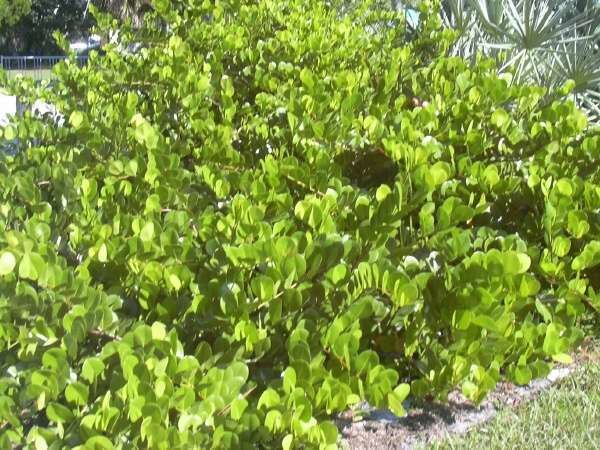 | ||
Similar Chrysobalanus, Chrysobalanaceae, Coccoloba uvifera, Conocarpus erectus, Coccoloba | ||
Chrysobalanus icaco cocoplum with fruit
Chrysobalanus icaco, the cocoplum, Paradise Plum and icaco, is found near sea beaches and inland throughout tropical Africa, tropical Americas and the Caribbean, and in southern Florida and the Bahamas. The inland subspecies is Chrysobalanus icaco pellocarpus.
Contents
- Chrysobalanus icaco cocoplum with fruit
- Tertiary ingredients of chrysobalanus icaco formulations pankaj oudhia s medicinal plant database
- Description
- References
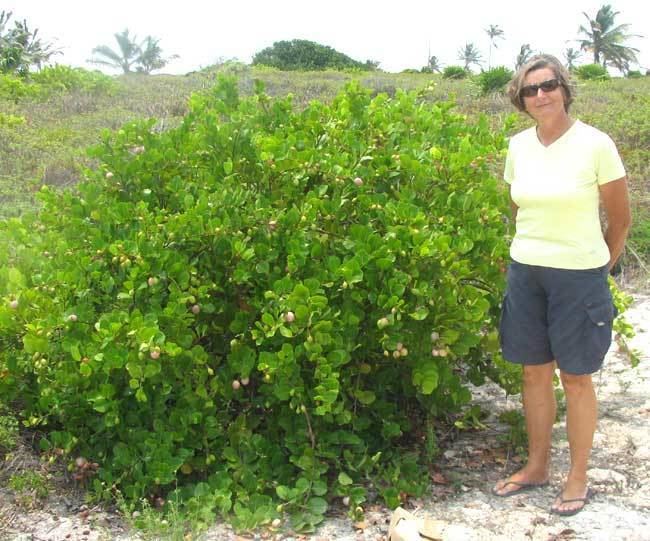
Tertiary ingredients of chrysobalanus icaco formulations pankaj oudhia s medicinal plant database
Description
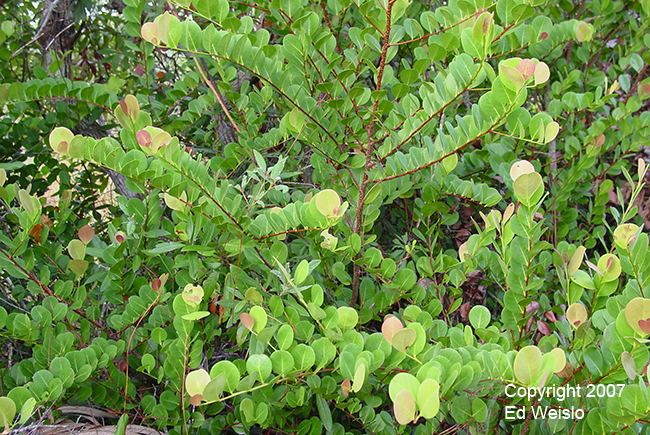
Chrysobalanus icaco is a shrub 1–3 metres (3.3–9.8 ft), or bushy tree 2–6 metres (6.6–19.7 ft), rarely to 10 metres (33 ft). It has evergreen broad-oval to nearly round somewhat leathery leaves (3 to 10 cm long and 2.5 to 7 cm wide). Leaf colors range from green to light red. The bark is greyish or reddish brown, with white specks.
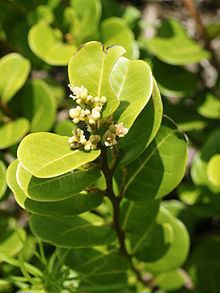
The flowers are small, white, in clusters, appearing in late spring. In late summer it bears fruit in clusters, that of the coastal form being round, up to 5 cm in diameter, pale-yellow with rose blush or dark-purple in color, while that of the inland form is oval, up to 2.5 cm long, and dark-purple.
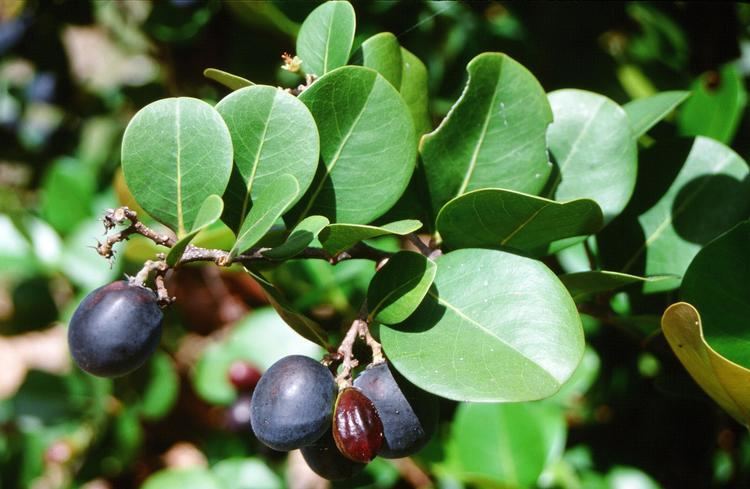
The coastal form is highly tolerant of salt, so it is often planted to stabilize beach edges and prevent erosion.
Chrysobalanus icaco is also planted as an ornamental shrub. The tree is unable to survive a hard frost. The fruit is edible with a mildly sweet flavor and is sometimes used for jam. The common name for this fruit in Trinidad & Tobago and Guyana is "fat pork". This plant can also be found on Cayo Icacos in Fajardo Puerto Rico. This island can be visited by water taxi.
